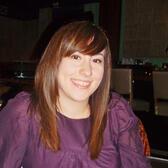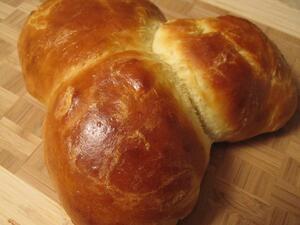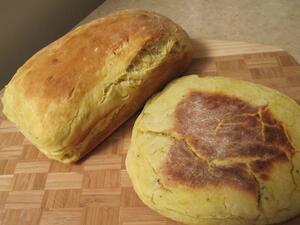Eating Jewish: Shabbat bread done differently
When I think of Shabbat dinner, one of the first things that comes to mind is the sweet, dense challah that I love so much. It has become so popular that it can be purchased in bakeries all week long, and like many of the iconic Jewish foods of North America (bagels, knishes, pastrami, and smoked meat, to name a few) it was introduced by members of the European Jewish community.
Challah has become synonymous with Shabbat dinner for many people, and I admit that I would be disappointed if none showed up at this meal. These strong feelings towards challah prompted me to start thinking about its central place on Shabbat tables. From there, it was only a small step for me to become curious about the bread that other Jewish communities have at their Friday night dinners.
When I started looking at recipes for Shabbat breads, I was struck by the diversity of such breads in the Sephardic community. In her cookbook, The Book of Jewish Food, Claudia Roden points out that unlike the Ashkenazi community, which has a common Shabbat bread, the Shabbat breads in the Sephardic community differ from community to community. The recipes I chose for this post, which come from the Tunisian and Ethiopian Jewish communities, are just two examples of the many types of bread that grace the Shabbat tables of Sephardic families. In The Foods of Israel Today, Joan Nathan explains that modern day Israel has an impressive variety of breads that represent the many groups that have settled in the country.
I chose to make bejma and dabo for this post because of their different qualities. The bejma being a plain, white bread that is comparable to challah without the sweetness, while dabo is a dense bread that is lightly spiced with turmeric and nigella seeds. Unlike the Sephardic custom of sprinkling seeds on their Shabbat loaves to symbolize the manna that God provided for the Israelites during their journey in the desert, the Tunisian bejma is left plain and after being shaped into a triangle, is then finished with an egg wash. It has a dense yet soft crumb that I think is the perfect bread for picking up the salads with which many Sephardic families begin their meals.
Ethiopian Jews prepare injera, which is a thin spongy bread made from teff, to go along with meals during the week, while dabo is usually reserved for Shabbat. This yellow tinted bread is eaten on Friday night with doro wat (a spicy chicken stew) and on Saturday morning with cottage cheese. Traditionally this bread was left to rise for 6 hours and was cooked over an open fire in a frying pan or on a flat disk.
I brought the bejma to a Shabbat dinner hosted by one of the members of the Mile End Chavurah, a non-denominational group in my neighborhood in Montreal, where it was a hit with all those in attendance. Along with the affirmation that this was a great recipe, I was also challenged to think about the role of bread-making on Shabbat when our host asked each of us what actions helped separate Shabbat from the rest of the week. Without too much thought, I explained that it was the act of preparing the Friday night meal and then sitting down to it that separated this time from the rest of the week for me. It made me realize that the act of making bread and other dishes for Shabbat is instilled with special meaning that isn’t there at other times during the week.
I hope that you can also find meaning in the act of making these breads for Shabbat dinner, where I can assure you that the challah won’t be missed once everyone has a bite of these delicious breads.
Bejma (Tunisian Shabbat Bread)
Adapted slightly from Joan Nathan’s The Foods of Israel Today
2 packages dry yeast (approximately two tablespoons)
¼ cup sugar
1 ½ cups lukewarm water
4 large eggs
¼ cup vegetable oil
2 teaspoons salt
5-6 cups unbleached all-purpose flour
-
In a large bowl, mix the yeast and 1 teaspoon sugar in 1 cup of the water. Stir the mixture and let it sit for 10 minutes.
-
Stir 3 of the eggs, oil, salt, sugar and the remaining ½ cup water into the yeast mixture. Using a spoon, mix in enough flour to form a soft, sticky dough. Knead the dough until smooth, about 10 minutes, and place in a greased bowl. Cover and let rise for an hour.
-
Punch down the dough and divide it into 9 rounds, about the size of a small orange. On a cookie sheet that has been greased or lined with parchment paper, place three rounds together to form a triangle. Repeat with the rest of the dough and let it rise, uncovered, for about 30 minutes.
-
Preheat the oven to 375 degrees.
-
Beat the remaining egg with a small amount of water and brush to top of the loaves with the egg wash. Bake the loaves for 15-20 minutes, until they are golden and sound slightly hollow when tapped.
Dabo (Ethiopian Shabbat Bread)
Adapted slightly from Joan Nathan’s The Foods of Israel Today
1 package dry yeast (approximately 1 tablespoon)
2 cups warm water
2 tablespoons sugar
2 tablespoons vegetable oil
4-5 cups unbleached all-purpose flour
1 tablespoon salt
1 teaspoon nigella seeds (also known as black caraway seeds)
½ teaspoon turmeric
-
In a large bowl, mix the yeast, water, sugar, vegetable oil and mix well.
-
Gradually add 4 cups of flour, the salt, nigella seeds and turmeric to the yeast mixture. Knead the dough until smooth, adding more flour if needed. This recipe makes a sticky dough, even after adding the flour and kneading it. Place the dough in a greased bowl and cover. Let the dough rise for 2 hours. According to Joan Nathan, Ethiopian cooks would let the dough rise for 6 hours.
-
There are two ways to cook the dough. The first way is the more traditional way and proceeds as following: punch down the dough and divide it into three pieces. Flatten each piece into a round that is about 2 inches thick. Heat an ungreased 12-inch frying pan over medium-low heat and place one round in the pan. Cook for 10 minutes on one side and flip, continue cooking the other side for several more minutes. You want each side to be golden brown and the dough to sound hollow when tapped.
-
The second way to cook the dough is a more modern way that is less labor intensive. Preheat the oven to 375 degrees. Place the dough in a greased, 10 to 12 inch round baking pan and bake for thirty minutes, until the bread is golden brown and sounds hollow when tapped.
-
If you choose to try cooking one round of dough the traditional way, you can use a rectangular loaf pan to cook the remainder of the dough in the oven.









Hi, I just got a bread maker. Any way of modifying these recipes so they can go in the bread machine? B
In reply to <p>Hi, I just got a bread by Betsy Roth
hey, i was wondering about this too, tried it today and it works fine...your bread maker should have a dough option, i let it mix everything than stopped it to let the dough rise. some bread makers also have a cook only option, but i made it on the stove and it turned out great.
and to the author- thank you for the dabo recipe, it was the only one i could find anywhere on the web and it is fantastic, brings back some great childhood memories of eating at my friend's house. her mother used to make this every shabbat and i loved it!!! kate,